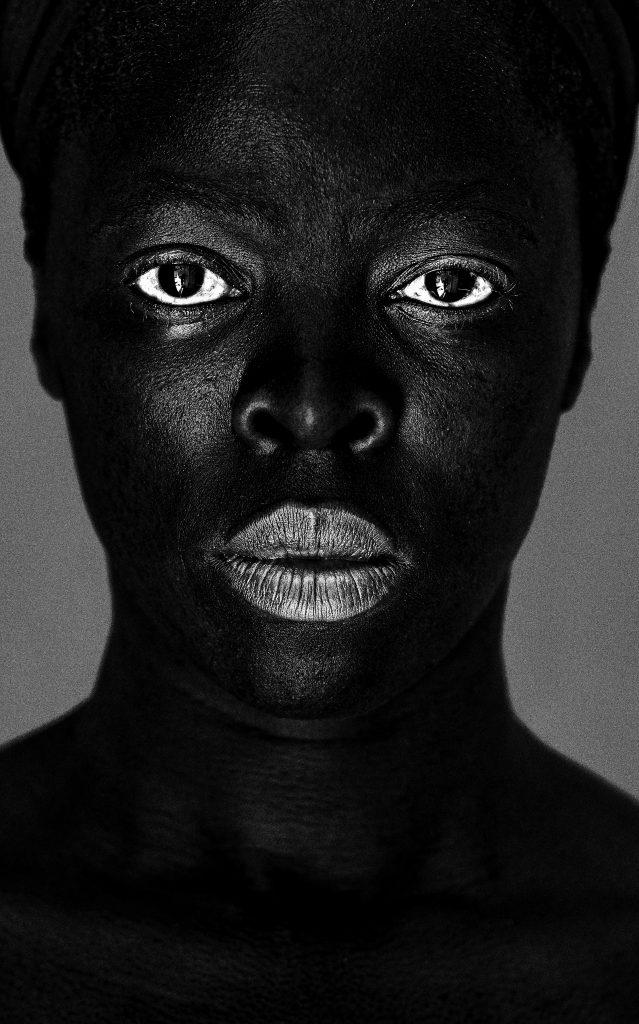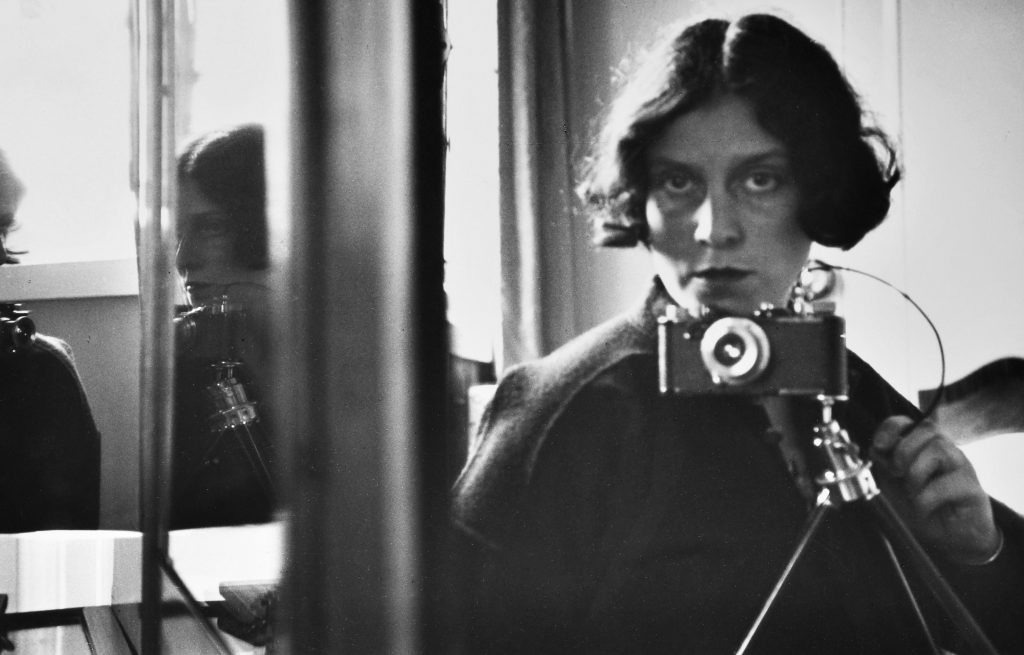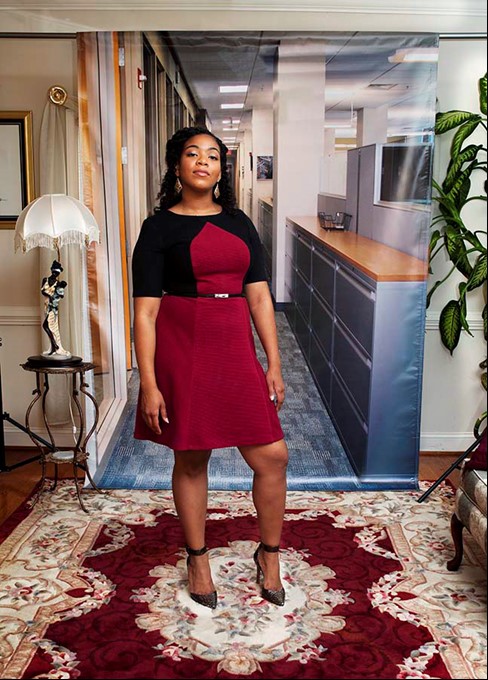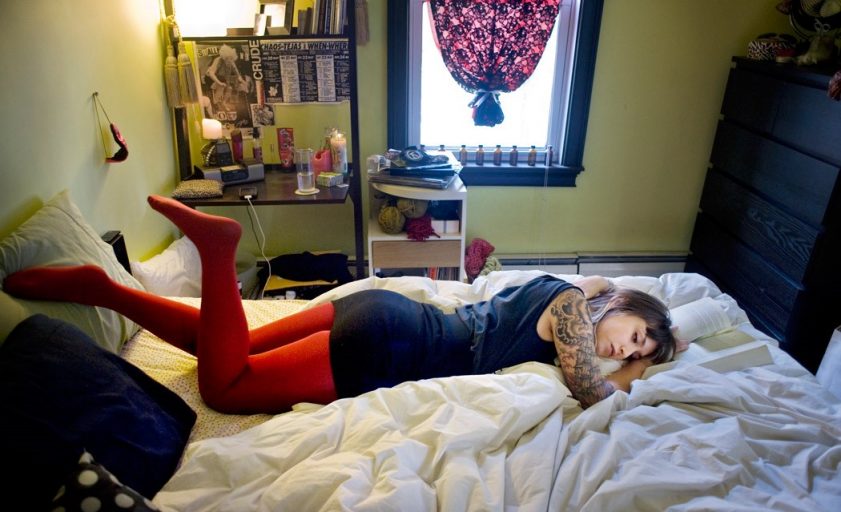Recent Acquisitions from The Ringling Photography Collection
by Robin O’Dell
“In a world ordered by sexual imbalance, pleasure in looking has been split between active/male and passive/female. The determining male gaze projects its phantasy on to the female form which is styled accordingly.”
― Laura Mulvey, Visual And Other Pleasures
The above quote was written in the 1970s by the noted film theorist Laura Mulvey (British, b. 1941). This idea of the “male gaze” was expanded to include all visual theories and spurred a re-evaluation of how and by whom images have been and are being made of women. Chris Jones, Curator of Photography and New Media, has culled eighteen photographs recently brought into the collection of The John and Mable Ringling Museum of Art and placed them sparingly on the walls, inviting visitors into this continuing dialogue. Small in number but large in visual delight, these photographs celebrate artists taking control of their own artistic identities.

Artists using self-portraiture include Zanele Muholi (South African, b. 1972). A transgender artist, Muholi uses their own image to project strength and directness, challenging the very idea of how people of color have been depicted throughout history. Muholi considers themselves a visual activist and is specifically concerned with presenting gay and LBGTQ as part of the photographic canon. In these self-portraits, Muholi’s skin is darkened to an almost pure black and the prints are large, offering a visually dramatic and physically compelling visage. Muholi’s work is immediately recognizable and wholly unforgettable.
Bea Nettles (American, born 1946) is respected for her use of experimental processes. For The Ringling, she created an image that incorporates photographs of the Museum’s environment with one of her own body to make a unique portrait. These fragments combine to layer time and place with her own distinct sense of self. The photograph is part of the series Return Trips including images of Spain and Morocco, so recognizing something so specific to this Museum offers an unexpected delight. The Eastman Museum in Rochester, New York, is currently presenting a virtual retrospective of Nettles’ fifty-year career. You can access it here: https://www.eastman.org/bea-nettles-harvest-memory. It provides a good overview of this very creative and inventive artist.

The Stanton B. and Nancy W. Kaplan Collection at The John and Mable Ringling Museum of Art, © Ilse Bing
In the photograph Self-Portrait with Leica twentieth-century photographer Ilse Bing (American, born Germany, 1899-1998) captures herself in the act of photographing. Using multiple mirrors, she plays with the idea of self and identity. The image shows both a frontal and side view of the artist while incorporating the Leica camera she became closely associated with. This small camera was revolutionary at the time, as most professional photographers still used box or cameras with bellows. This iconic photograph is part of a large gift of over a thousand photographs given to The Ringling by Stanton and Nancy Kaplan in 2019. Other gifts by the Kaplans in the exhibition include works by Ruth Bernhard (American, born Germany, 1905-2006) and Lotte Jacobi (American, born Prussia, 1896-1990). All three of these twentieth-century artists included in the exhibition were able to carve out noted careers, despite facing limited opportunities due to their gender. Women have actively participated in photography since its inception, yet when the history of photography was first written it was primarily male artists who filled the pages. Like in so much of Western society, women have had to steadily chip away at these constructs, often having to make their own opportunities. The bold images here testify to these artists’ skills. Bernhard, specifically, presents the female body in her own distinctive style, and Jones has selected some lesser-known, while still visually compelling, images.


The exhibition also offers some fascinating portraiture, which the Museum has purchased in the last couple of years, having made an effort to acquire photography by a variety of contemporary women artists. In her series Am I What You’re Looking For? Endia Beal (American, born 1985) takes young black women who are transitioning from college to the workplace and poses them in their own home, but in front of a generic workplace backdrop. These young women stand dressed in their workplace finest, staring into the camera with aplomb. The very act of presenting young black women within the construct of a traditionally male-dominated workplace environment heightens the understanding of how the societal norms we take for granted can be culturally biased. Likewise, Deanna Lawson (American, born 1979) carefully poses a tableau of young lovers fully clothed and embracing within a bedroom. This representation particularly elicits comparisons to the “male gaze,” as Lawson empowers the young black woman to control her own sexuality. You would think that the photograph is a spontaneous snapshot, but Lawson carefully constructs her images to intensify the overall effect. Knowing this invites the viewer to look at every detail for clues to the visual story.
Three photographs are presented from Rania Matar’s (Lebanese, born 1964) series A Girl and Her Room. Matar photographs young women in their bedrooms surrounded by the trappings of adolescence. The locations vary from Beirut, Lebanon to Winchester, Massachusetts. Seeing how each girl has dressed and decorated her room gives an almost voyeuristic glimpse into how she is materially shaping her identity. It brings to mind Sally Mann’s series At Twelve, Portraits of Young Women, not because of any visual similarity (Matar’s pictures are color and large scale), but because they also illuminate the awkward transition from child to adult, teetering on the edge of full womanhood. Matar captures the importance of the outer world to inform the inner.

Selina Román (American, b. 1978) is a Florida artist. In her series Please Disturb, she invites friends and colleagues to visit her in traditional roadside motels and participate in the creative process through the use of props and costume. In the photograph chosen for this exhibition, Solar Flare II, the glare of sunlight obscures the face of the subject. Román uses this anonymity as a force of power. “I can see you, but you can’t see me–so you don’t know what I am thinking or feeling,” she is quoted as saying in the label. As a faceless woman, you are no longer being judged by traditional standards of beauty. That, alone, is empowering.
A trip to The Ringling Museum is always a delight. And where else in the Tampa Bay area are you going to see wall-sized sensual Baroque paintings by Peter Paul Rubens (Dutch 1577-1640) in one gallery and then experience the penetrating stare of Zanele Muholi in another? And if you have enjoyed looking at women claiming their power, the exhibition Circus and Suffragists is also currently showing at The Ringling Circus Museum through February 14, 2021, and Reframed is currently on view at the Florida Museum of Photographic Arts through the end of the year.
Being Seen: Recent Acquisitions from The Ringling Photography Collection is on view at the John and Mable Ringling Museum of Art through January 3, 2021.
LEAD PHOTO IMAGE: Rania Matar, Anna F., Winchester, Massachusetts, from the series A Girl in Her Room, 2010, printed 2018, Archival digital chromogenic print. © Rania Matar
Courtesy of the John and Mable Ringling Museum of Art.
Robin O’Dell is the former Curator of Photography at the Museum of Fine Arts, St. Petersburg and is currently the Curator of Collections at the Florida Museum of Photographic Arts, Tampa. In addition to curating dozens of photography exhibitions, she has written for Image Magazine, George Eastman Museum, and the Arts Coast Journal for Creative Pinellas.

I really enjoyed this review by Robin Odell and the images she has shared here. It is good to see ART again, if not in person, then through the eyes of one who can capture the meaning for us all whom are stuck at home. Thank you Robin Odell and Ringling for sharing the love of Art and culture in these trying times!
Thank you for visiting the site. Please follow us across all our social media platforms to be notified of future posts!
Thanks Robin, a diverse group of portraits, a favorite discipline of mine.
Thank you for visiting the site. Please follow us across all our social media platforms to be notified of future posts!